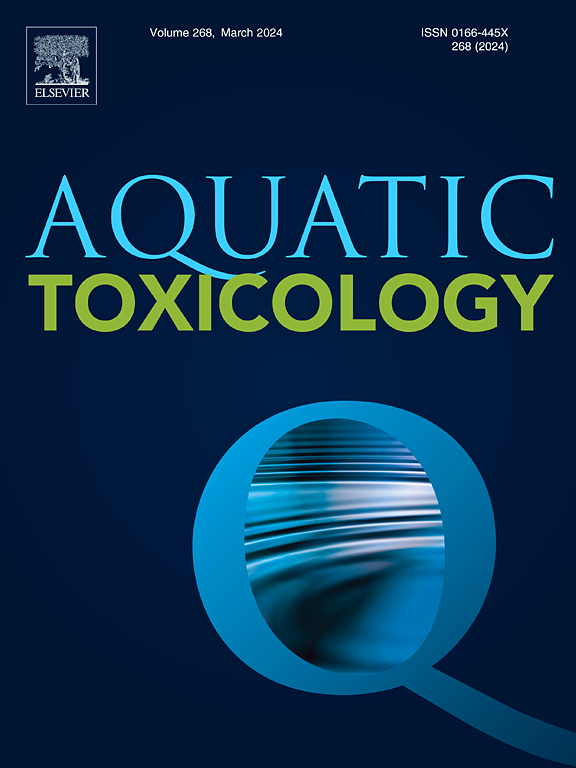Chronic toxic effects of chloroxylenol exposure on Rana chensinensis: Insights from endochondral ossfication
IF 4.1
2区 环境科学与生态学
Q1 MARINE & FRESHWATER BIOLOGY
引用次数: 0
Abstract
Chloroxylenol (para‑chloro-meta-xylenol, PCMX), is a widely used antimicrobial agent and can remain in the aquatic environment. Although toxicity studies related to PCMX on the aquatic animals like zebrafish and Brachionus koreanus have been reported, there are few reports in the ecological risk of amphibians. In this study, the toxicity of different concentration (143, 14.3, 1.43 μg/L) of PCMX treatments on the endochondral ossification and body condition of Rana chensiensis tadpoles was investigated at environmentally relevant concentrations during metamorphosis. The chronic exposure of PCMX decreased bone length and ossification of limbs, caused changes of thyroid gland structure and ossification related gene expression levels. Besides, we found that R. chensiensis developed rheumatoid arthritis. Therefore, these results provided valuable evidence that the ecological risk of PCMX that will negatively affect the body condition, thyroid hormones homeostasis and skeletal development of R. chensiensis tadpoles.
氯氧苯酚暴露对滇金丝猴的慢性毒性影响:软骨内骨化的启示
氯二甲苯酚(对氯二甲苯酚,PCMX)是一种广泛使用的抗菌剂,可残留在水生环境中。虽然有关 PCMX 对斑马鱼和朝鲜蛙等水生动物的毒性研究已有报道,但有关其对两栖动物生态风险的报道却很少。本研究调查了不同浓度(143、14.3、1.43 μg/L)的 PCMX 对蝾螈变态过程中软骨内骨化和身体状况的毒性。长期暴露于 PCMX 会降低蝌蚪的骨长和四肢骨化程度,引起甲状腺结构和骨化相关基因表达水平的变化。此外,我们还发现浙贝母患上了类风湿性关节炎。因此,这些结果提供了有价值的证据,证明 PCMX 的生态风险会对浙贝母蝌蚪的身体状况、甲状腺激素平衡和骨骼发育产生负面影响。
本文章由计算机程序翻译,如有差异,请以英文原文为准。
求助全文
约1分钟内获得全文
求助全文
来源期刊

Aquatic Toxicology
环境科学-毒理学
CiteScore
7.10
自引率
4.40%
发文量
250
审稿时长
56 days
期刊介绍:
Aquatic Toxicology publishes significant contributions that increase the understanding of the impact of harmful substances (including natural and synthetic chemicals) on aquatic organisms and ecosystems.
Aquatic Toxicology considers both laboratory and field studies with a focus on marine/ freshwater environments. We strive to attract high quality original scientific papers, critical reviews and expert opinion papers in the following areas: Effects of harmful substances on molecular, cellular, sub-organismal, organismal, population, community, and ecosystem level; Toxic Mechanisms; Genetic disturbances, transgenerational effects, behavioral and adaptive responses; Impacts of harmful substances on structure, function of and services provided by aquatic ecosystems; Mixture toxicity assessment; Statistical approaches to predict exposure to and hazards of contaminants
The journal also considers manuscripts in other areas, such as the development of innovative concepts, approaches, and methodologies, which promote the wider application of toxicological datasets to the protection of aquatic environments and inform ecological risk assessments and decision making by relevant authorities.
 求助内容:
求助内容: 应助结果提醒方式:
应助结果提醒方式:


